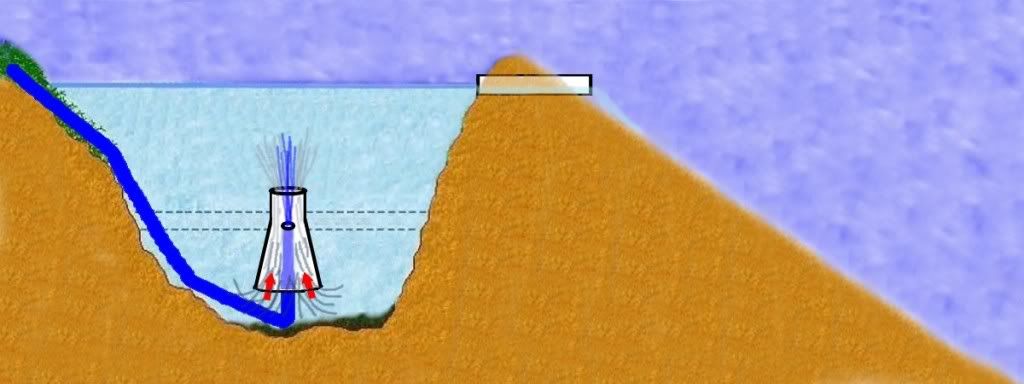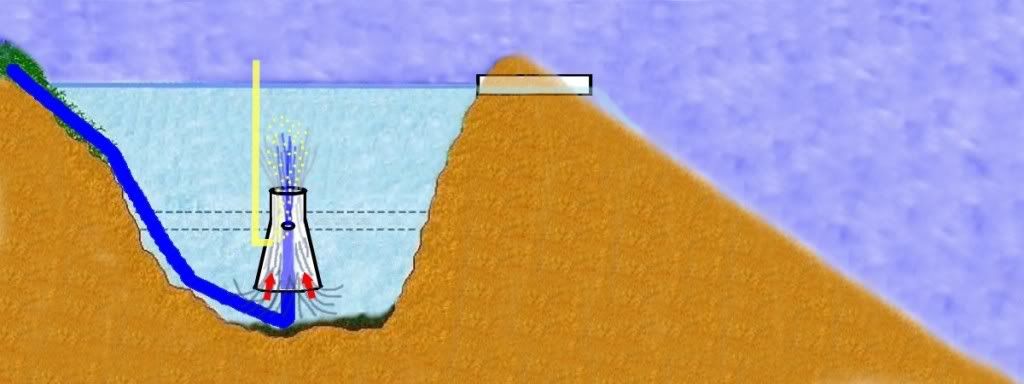Jetting water through the interior of larger cylinder creates a low-pressure region at the opposite end of the discharge (venturi principle). The volume of water that exists the larger cylinder is
a multiple of the volume that is jetted under pressure.
In theory, jetting the incoming water through a deeply submerged and vertically oriented venturi-structure should create a fair amount of vertical circulation.

I'm not sure if the next idea would work; but it might be possible to attached a small tube (that extends above the surface) to the low-pressure region of the submerged cylinder. Depending on the pressure-differential, the tube "should" allow inducted surface-air (bubbles) to exit the cylinder's top in unison with the vertical upwelling of water.

250 gpm (=15k gal/hr = 1.1 ac/ft per day) is a lot of water for such a small pond. If your pond EVER has the ability to stratify, then I'd suggest using the incoming water to prevent such occurances.
I'm now curious to know if anyone has ever tried similar methods to utilize the benefits of pressurized water-inflows. Or, is this simply a crazy concept?